In a world full of screens and gadgets, creativity is a special skill that comes from using your imagination. As parents, you have the power to build limitless creativity within your child by providing them with the gift of exploration. In this article, we will step into a journey of creative play, where each moment becomes an opportunity to develop creativity and self-expression.
Creative play is more than just fun; it is a way for children to explore their curiosity and skills. From building imaginary worlds with simple building blocks to creating art that speaks volumes without words, we will explore the magic that leads to their imaginations. Together, we will look into the wonders of role-playing, storytelling, and the joy of inventing and discovering. Join us in the world of creative play, where each day brings adventure, growth, and wonderful memories to treasure for a lifetime.
1. The Power of Creative Play
Creative play is a flexible and open-ended form of play that encourages children to use their imagination and explore their world. Let us explore the benefits and importance of creative play.
a. Stimulates Imagination and Creativity:
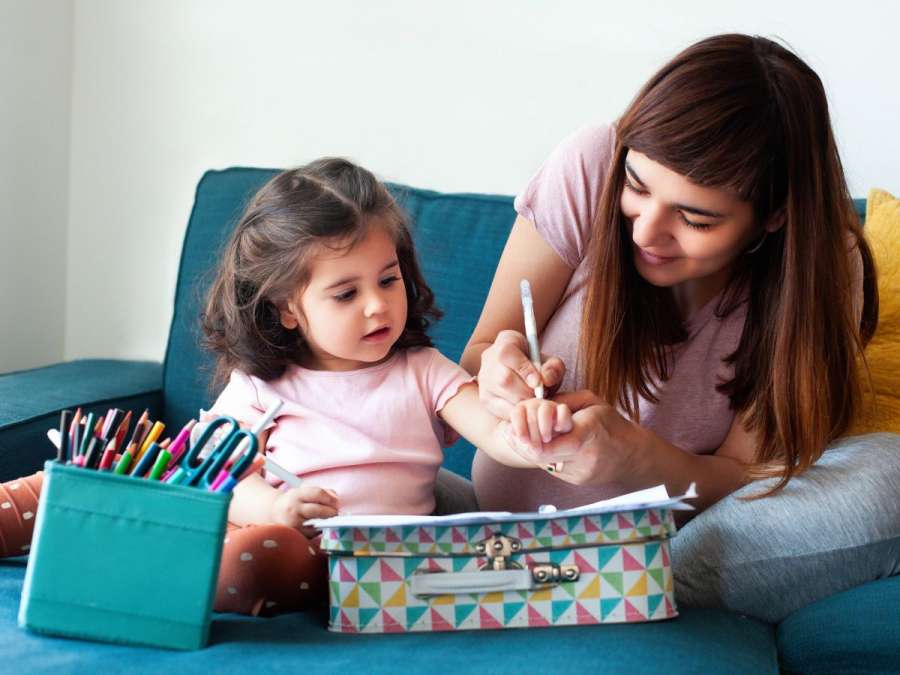
Creative play powers children’s imagination, allowing them to create stories, and imaginary worlds, and explore different roles. It boosts their creativity by promoting original thinking and problem-solving skills.
b. Enhances Cognitive Development:
Engaging in creative play helps children develop rational skills such as critical thinking, problem-solving, and decision-making. They learn to make choices, experiment with cause and effect, and think outside the box.
c. Supports Emotional Development:
Through creative play, children learn to express and manage their emotions. They can explore different feelings, act out situations, and develop empathy and understanding towards others.
d. Develops Social Skills:
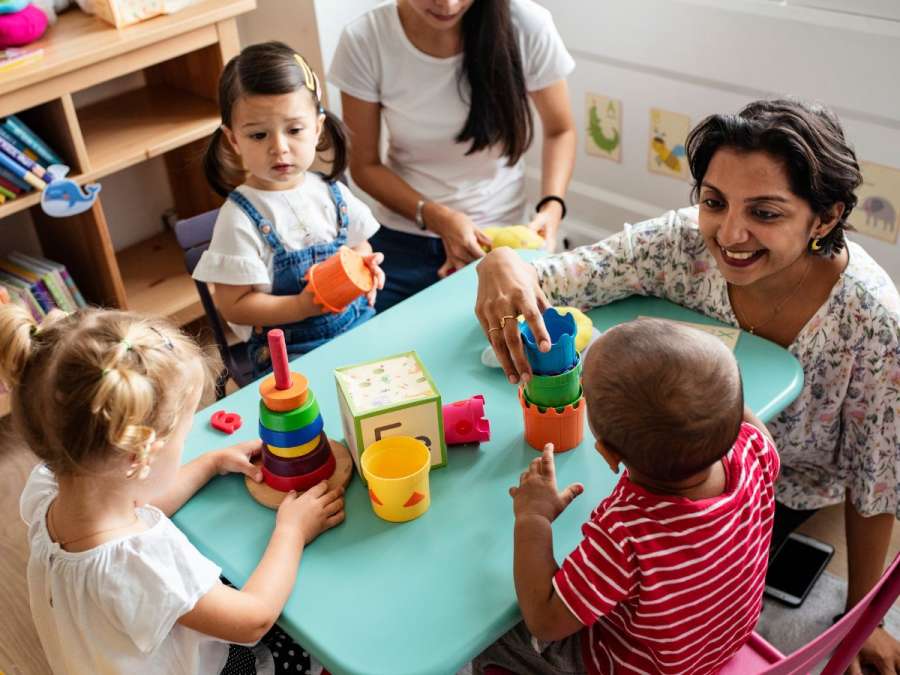
Creative play also provides opportunities for children to interact and collaborate with others. They learn to negotiate, share ideas, take turns, and engage in cooperative play, which helps build social skills and relationships.
e. Boosts Language and Communication:
Through creative play, children experience a wide range of language interactions. They develop their vocabulary, practice conversation skills, and learn to express themselves better which helps in improving their language and communication abilities.
2. Types of Creative Play
Creative play includes various forms that are made for different interests and choices. Let us explore some popular types of creative play.
a. Imaginative Play:
Imaginative play involves creating imaginary situations and acting to be different characters. Children can explore various roles like superheroes, doctors, and chefs, or also engage in imaginative storytelling.
b. Artistic Play:
Artistic play allows children to express themselves through various art forms such as drawing, painting, sculpting, and collage-making. It helps with self-expression and improves motor skills.
c. Constructive Play:
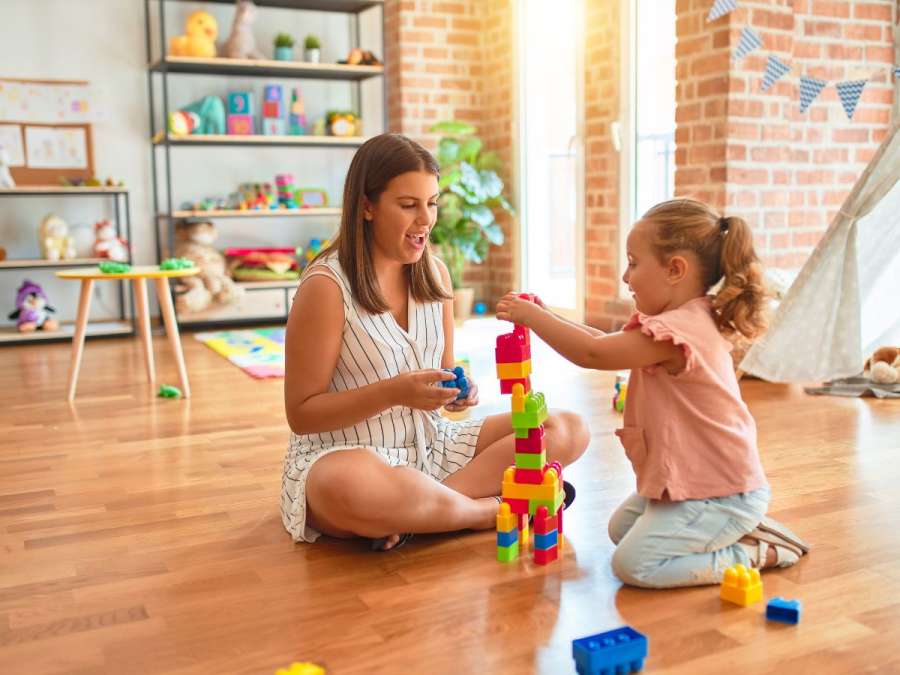
Constructive play involves building and constructing using materials like blocks, Legos, or construction sets. It improves geometric awareness, and problem-solving, and improves creativity through building and designing structures.
d. Sensory Play:
Sensory play uses the senses which allows children to explore different textures, sounds, smells, and tastes. It can involve activities like playing with sand, water, and dough or engaging in other activities using different textured materials.
e. Dramatic Play:
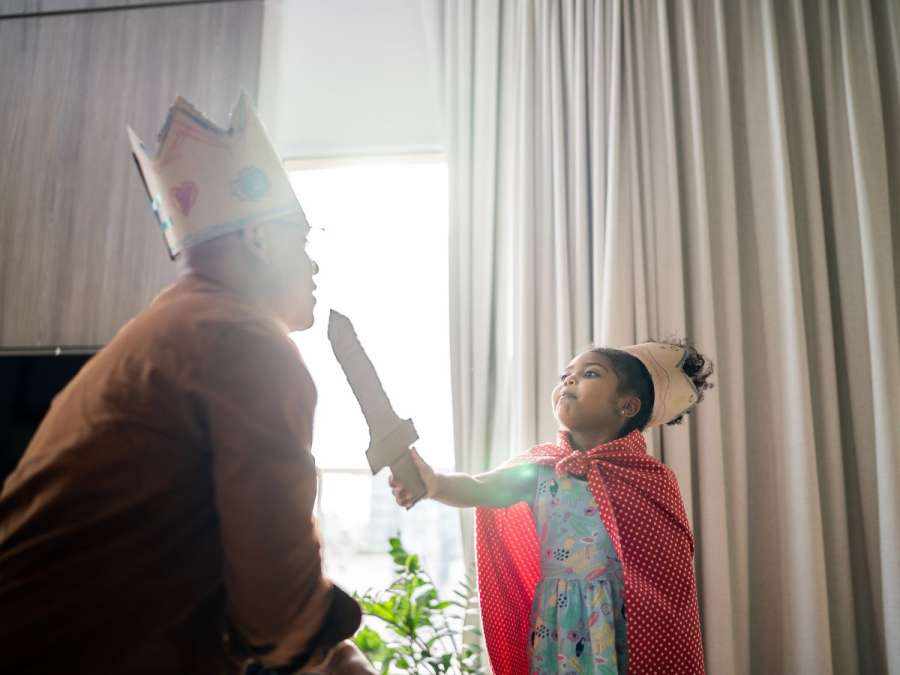
Dramatic play involves acting out real-life situations or role-playing. Children can create and act out different places such as a grocery store, restaurant, or doctor’s office which builds creativity, social skills, and a better understanding of the world.
3. Encouraging Creative Play
Here are some practical tips to include creative play in your child’s daily life.
a. Provide Open-Ended Materials:
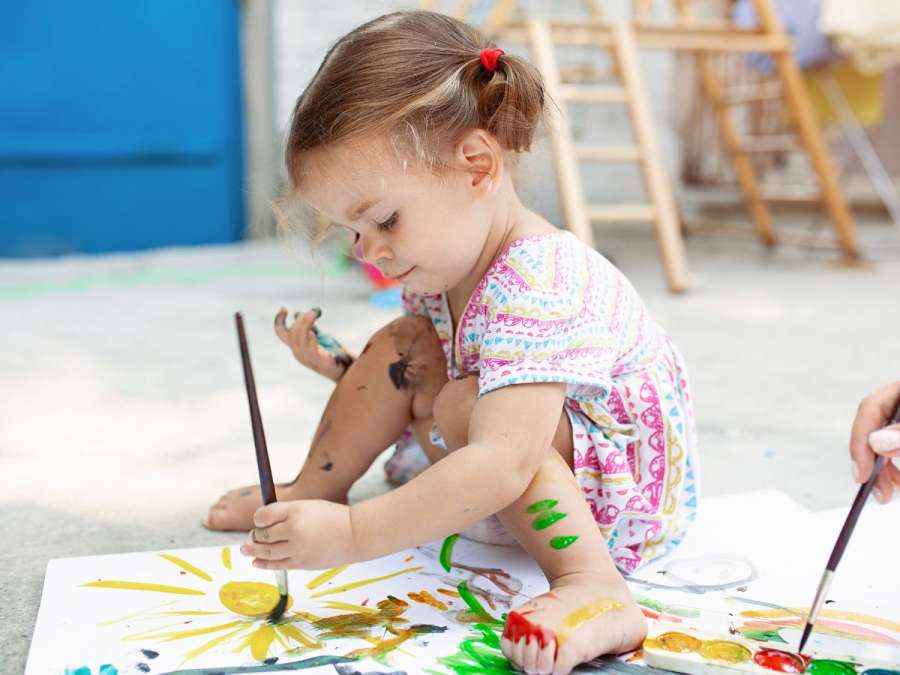
Give them a variety of different textured materials like blocks, art supplies, costumes, and props that will encourage children to use their imagination and explore different possibilities.
b. Create a Playful Environment:
Assign a place in your home as a complete play space where your child can freely engage in creative play. Arrange the materials in an inviting manner and create an organized, yet convenient, environment that makes them curious.
c. Limit Screen Time:
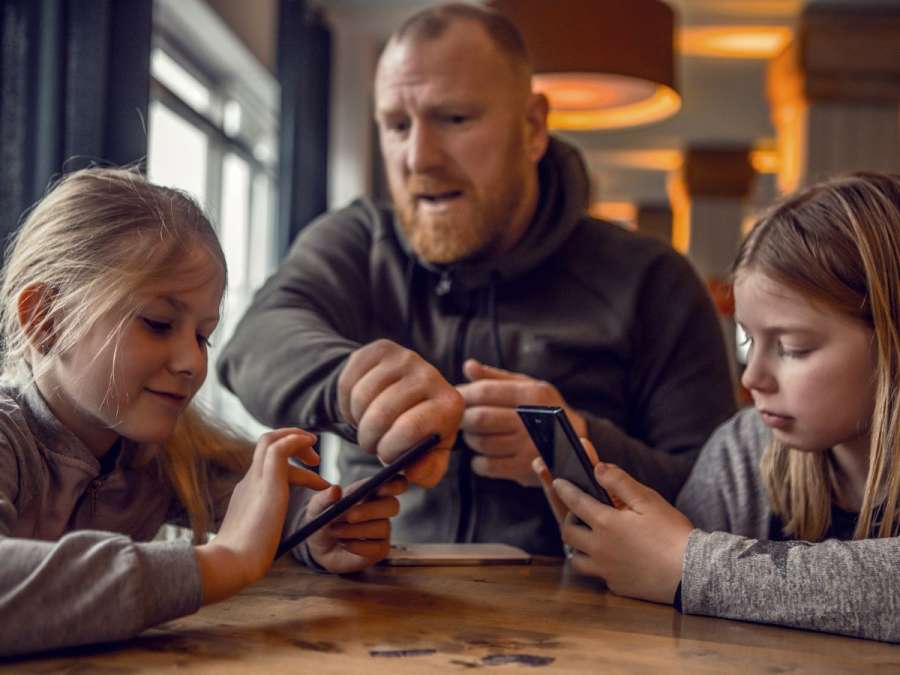
Set limits on screen time to allow space for creative play. Encourage activities that ask for their imagination and hands-on exploration rather than passive entertainment like phone screens or television.
d. Join in the Play:
Be your child’s playmate, join in their imaginative stories, art projects, and pretend play. This strengthens your bond and supports their creativity.
e. Provide Unstructured Time:
Allow your child to explore and create on their own without scheduling every moment. Let them take the lead in their play.
f. Encourage Outdoor Play:

Nature gives a very good environment for creative play. Encourage outdoor exploration, whether it is in a backyard or a park. Let your child engage with natural elements, observe insects, collect leaves, or create outdoor art.
g. Celebrate and Display Creations:
Celebrate your child’s creativity by displaying their artwork, constructing forts, or showing their imaginative play setups. This shows them that their creations are valued and encourages them to keep exploring and creating.
Creative play is an important component of childhood that builds imagination, curiosity, and overall development of your child. By understanding the power of creative play, you can provide your child with a path to express themselves and also help with their brain growth and social interaction skills. Include different forms of creative play into your child’s daily life, providing them with the space, materials, and support they need to explore, create, and dream. Watch as their creativity flows, building a lifelong love for learning. Show them appreciation as their imagination grows.
